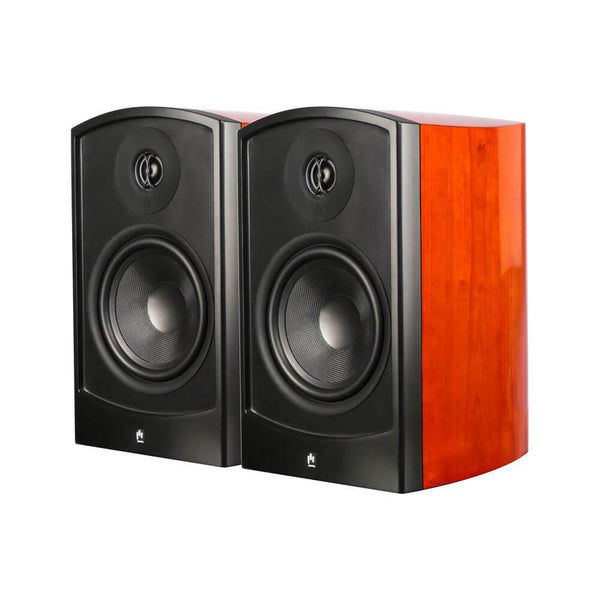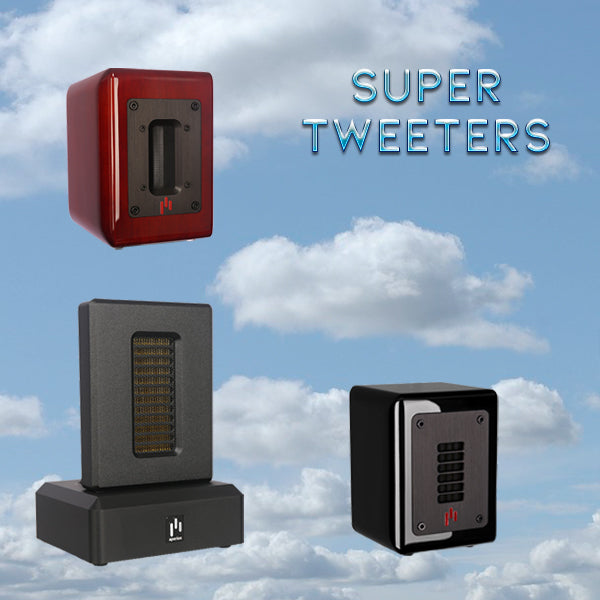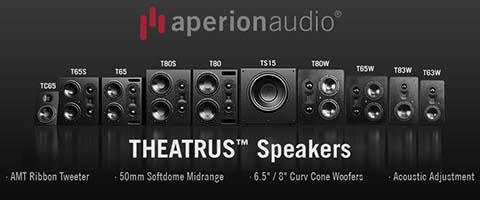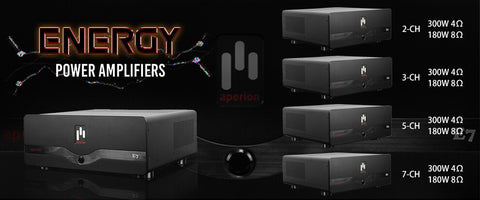By: Professor Humphreys
Speaker Engineer
- - - - - - - - - - - - - - - - - - - - - - - - - - - - - - - - - - - - - - - - - - - - - - - - - - - - - - - - - - - - - - - -

Put simply, speakers make sound waves. They pull this off by converting electric signals to movements of air. The mechanics of all this can be easily understood. Since knowledge is power, enjoy the process of becoming more powerful as you journey through this course.
- - - - - - - - - - - - - - - - - - - - - - - - - - - - - - - - - - - - - - - - - - - - - - - - - - - - - - - - - - - - - - - -
The Anatomy Looks Something Like This:
- Cone: this is what pushes the air and begins the sound wave’s journey. Most modern tweeters move air with a dome rather than a cone.
- Voice coil: the electromagnet that drives the cone.
- Magnet: the non-changing magnetic field that allows the voice coil’s alternating magnetic force to be attracted or repelled.
- Top plate, back plate and pole piece: the magnetically conductive parts that efficiently concentrate the magnet’s energy around the voice coil.
- Spider: a springy cloth disc that keeps the voice coil and bottom of the cone from moving off to the side while allowing it to move forward and backwards.
- Surround: a springy ring that keeps the top of the cone from moving off to the side while allowing it to move forward and backwards. Together with the spider, a suspension system is formed for the parts that move, the moving parts being the cone and voice coil.
- Flex wires and wire terminals: this is how the electricity from the amplifier connects to the voice coil.
- Dust cap: a cover glued to the cone that keeps debris from getting into the gap between the magnet and the pole piece where the voice coil resides.
- Frame (or basket): what holds all these parts together.

- - - - - - - - - - - - - - - - - - - - - - - - - - - - - - - - - - - - - - - - - - - - - - - - - - - - - - - - - - - - - - - -
To Sum It All Up
The voice coil is an electro-magnetic engine whose north and south poles are determined by which way it is charged. Charge it one way, and the coil move up. Charge it the opposite way, and the coil moves down. Place the coil near a permanent magnet, and by alternating the charge, it will either be attracted to it or repelled away from the magnet. Now, attach this coil to a membrane (the cone) so that you can push some air around, hook it up to an amplifier with an audio (alternating) signal and, eureka! you have a speaker (less the cabinet and cross-over).

- - - - - - - - - - - - - - - - - - - - - - - - - - - - - - - - - - - - - - - - - - - - - - - - - - - - - - - - - - - - - - - -
The Specs of Specs
Let’s face it, you start shopping for speakers and you have a heckuva lot to keep track of. Acoustics, speaker placement, speaker efficiencies, the sales pitch, and so on. Relying on specs might seem like a handy solution to the confusion but consider this: specifications can be misleading.
One reason is that there is very little supervision in monitoring specs. So some manufacturers are prone to hyperbole. Further, most performance specifications depend on unstated test conditions that aren’t standardized. With this in mind, rest assured there are some tricks-of-the-trade you can learn that will give you a shopping advantage.
- - - - - - - - - - - - - - - - - - - - - - - - - - - - - - - - - - - - - - - - - - - - - - - - - - - - - - - - - - - - - - - -
Tricks-of-the-Trade
- What is Nominal Impedance? Think resistance. But first a little background. All electrical devices resist the flow of electricity to some degree. Because they resist at some frequencies more than at others, engineers thought they would confuse the layperson. Thus they chose the word impedance instead of resistance. But the concept is the same. The nominal impedance (resistance) means “the lowest the impedance (resistance) will be at any frequency is not much lower than the spec listed.” This spec is unrelated to the quality of speaker performance but it can effect how much power your speaker draws from your receiver. The lower the impedance, the more power the speaker will draw from your receiver with the “volume” knob at a given position.
- What is Efficiency (also known as SPL)? Cars measure their efficiency in miles per gallon, speakers in decibels (dB) per watt at one meter distance. If a speaker is 10dB higher in efficiency than another, it will play twice as loud with the same amount of power. An increase of 3 dB means it will play just as loud with half the power. Don’t mistake efficiency for quality. In fact, many good speakers, like high performance cars, are low in efficiency.
-
What is Sensitivity?This takes efficiency and adds the effect of impedance. If two speakers are the same in efficiency but one as half the impedance (resistance), it will play 3dB louder since it’s drawing twice the power from your amp (and that’s without touching the volume knob). Efficiency and sensitivity are unimportant unless:
- You’re afraid your receiver can’t play your speakers loud enough, in which case efficiency matters.
- You want to play two sets of different speakers at the same volume, in which case sensitivity matters. For home theater, your receiver will typically allow you to correct for differences in sensitivity between your speakers.
- What is Frequency Response? This is usually the most reliable indicator of a speaker’s sound quality. Unfortunately, it’s also the easiest spec to manipulate given that it depends on microphone placement, room placement, how the graph of the response is scaled and smoothed, etc. If your speaker system really is +/- 3dB from 300 Hz to 18,000 Hz in a lab condition and +/- 5 dB from 30 Hz to 500 Hz in your listening position it’s likely to be a fine sounding system indeed. If you choose to look at response graphs, remember: rough peaks that are narrow in frequency range are actually less of a problem than smooth graphs that have a wide frequency range that is low or elevated.
- What is Crossover Frequency? This refers to the frequency when one driver starts to play louder than another. This spec, taken by itself, means almost zilch. Sometimes roll off slopes, such as 12 dB/oct, will also be specified. Although this spec might mean a little more, engineers can’t agree what kind of slope is best. If you’d just as soon not go insane ignore crossover specs. They really only mean something to speaker designers.
-
What is Power Handling?Continuous power handling is only limited by how hot the voice coil can get before the glue that holds the wire begins to melt. Peak power handling refers to how big of a momentary burst (at the most troublesome bass frequency) a speaker can take. Because power handling is the one spec that most people think they understand, it’s often used to judge a speaker’s overall quality. Bad idea. Here are three reasons why:
- If a speaker claims to handle 100 watts, is that for a second, a few minutes, or an hour? Is it program material, sine wave, or some designed test noise? The same speaker could have been rated by another manufacturer at 20 watts.
- Power handling is unimportant unless you intend to play your speakers really loud over a long period of time.
- This rating does not have to be higher than your receiver’s power rating.
- What is Recommended (amplifier) Power? This defines the manufacturer’s idea of a sensible range of amplifier (or receiver) power for their speaker. This specification is a helpful way of subjectively combining power handling and efficiency into one useful rating.
- What is Max SPL: Again combining power handling and efficiency into one spec, this is a measure of how loud a speaker can play. It’s hard to make sense of this spec. There are ambiguities associated with power handling plus a lack of agreement on whether the test should be done in a live room and at what distance from the speaker.
These speaker specifications try to tell you things like how well a speaker will match up with your receiver, how loud they can play, and some other things that, for lack of a better word, are just plain silly. Some specs also try to convey something about how they will sound. But to really determine how good a speaker sounds, you will need to put aside the specifications and just listen. To help you do this well, get some advice in our “How to Make Fair Speaker Comparisons” class.
For those who can’t get enough of the nitty-gritty about speakers, here are some additional resources to satisfy every level of technical curiosity. Enjoy.
- Sound and Water Waves – The University of Tennessee Department of Physics and Astronomy
- Frequency, Octave, and Wavelength – Room Acoustics
- How We Localize Sound – Physics Today on the Web
- Art Ludwig’s Sound Page – One Guy’s Thing

Complete Your Sound System Solution

Sign up for our newsletter below, and join our social media groups to stay up to date with the latest news and information from Aperion Audio!
 |
 |






